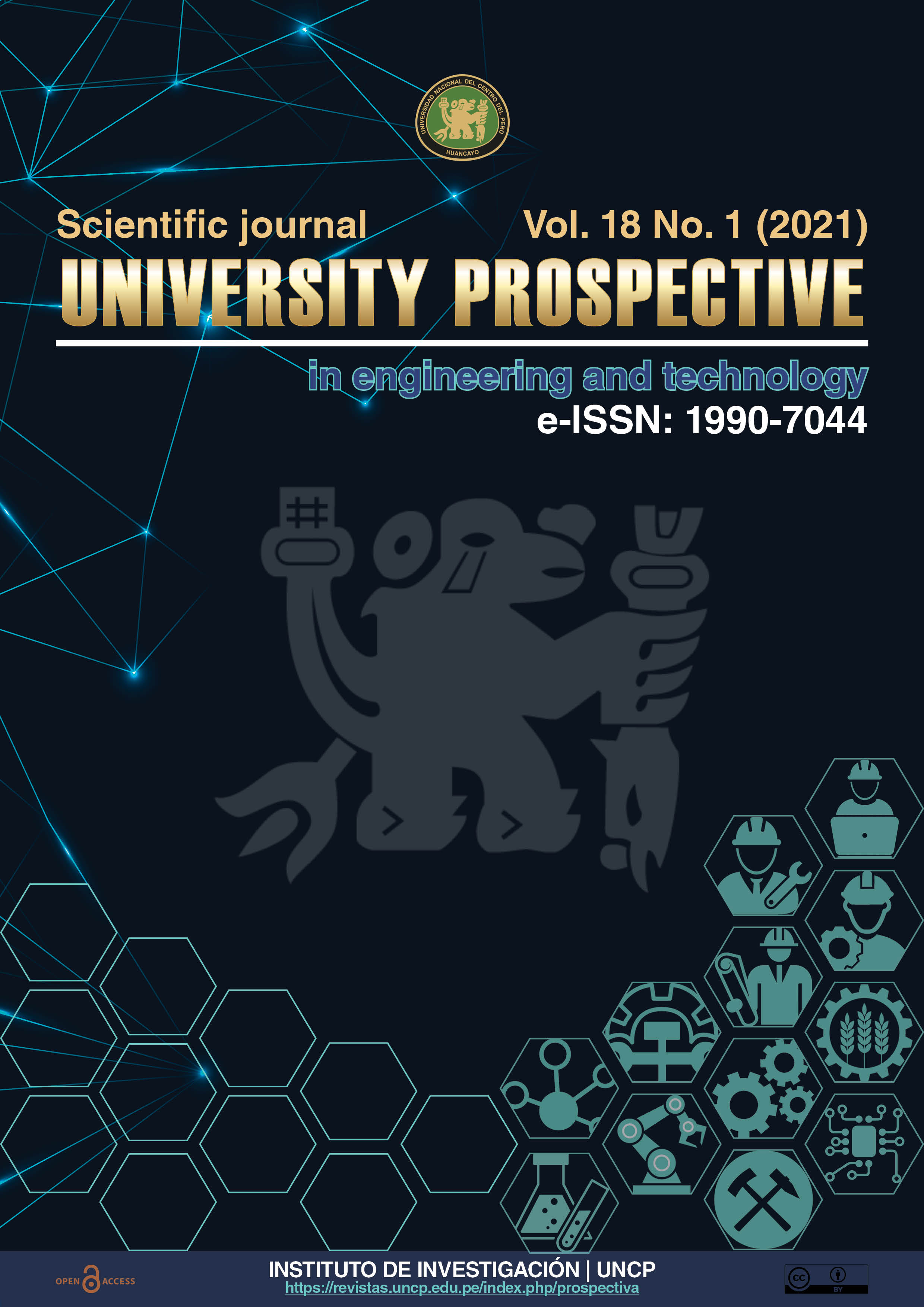Data Science application for the evaluation of turbidity in the drinking water treatment of the city of Huancayo
DOI:
https://doi.org/10.26490/uncp.prospectivauniversitaria.2021.18.1650Keywords:
Assessment of turbidity, Drinking water, Data Science, Contaminants, Chemical coagulantAbstract
Turbidity is a physical pollutant with a greater presence in the water to be treated, when its production is intended, above all, for domestic use. A very practical and economical method of reducing this pollutant is by using chemical coagulants or polymers, which, under the principle of bipolar ions, can destabilize colloids and promote the precipitation of total soluble solids. Subsequently, after destabilization, flocs are formed, which become clusters of fine material in suspension which, for their rapid precipitation, are accelerated by the addition of special flocculants. The purpose of this research is related to the application of computational algorithms to create a prediction model of the optimal coagulant dose in the reduction of water turbidity in a treatment plant in the city of Huancayo. For this purpose, data was taken from the plant laboratory, which was nine months old, which were filtered and processed for the application of data science in two major important phases: training, with 70 % of data and; test, with 30 %. The main finding was that the prediction results were 70 % similar to the true results, taking into account the independent variables of initial turbidity, final turbidity, pH, color, among others. It is concluded that the training and validation of the most efficient algorithm is that of Random Forest with 82 % and 72 %, respectively; likewise, the most relevant factors are: turbidity, color of total dissolved solids and conductivity to predict the optimal coagulant dose with the generated model. In that sense, the model could serve purposes of improvement in water treatment.
Downloads
References
American Water Works. (2003). Water Quality. American Water Works Association.
Boschetti, A. & Massaron, L. (2015). Python Data Science Essentials. Packt Publishing Ltd.
Google Maps. (2019). Google Maps. Google Maps. https:// www.google.com/maps/place/Capilla+-de+Hualahoyo/@-11.9760384,-75.104562,18088m/data=!3m1!1e3!4m5!3m4!1s0x910ebd-972336b6bd:0x9a414925675093c0!8m2!3d-11.9995597!4d-75.2203856
Khan, Y. & See, C. S. (2016). Predicting and analyzing water quality using Machine Learning: A comprehensive model. 2016 IEEE Long Island Systems, Applications and Technology Conference (LISAT),1-6. https://doi.org/10.1109/LISAT.2016.7494106
Kim, Y. H.; Im, J.; Ha, H. K.; Choi, J.-K. & Ha, S. (2014). Machine learning approaches to coastal water quality monitoring using GOCI satellite data. GIScience & Remote Sensing, 51(2), 158-174. https://doi.org/10.1080/15481603.2014.900983
Menezes, F. C. de; Rodriguez Esquerre, K. P. S. O.; Kalid, R. de A.; Kiperstok, A.; Matos, M. C. de O. & Moreira, R. (2009). Redes neurais artificiais aplicadas ao processode coagulação. Engenharia Sanitaria e Ambiental, 14(4), 449-454. https://doi.org/10.1590/S1413-41522009000400004
Mera Arrivasplata, Katia, A. & Coronel Guevara, A. del R. (2016). Propuesta de un método de control de los parámetros de calidad de agua cruda para obtener agua potable de óptima calidad en la empresa Epsel SA. Tesis para optar el título de Ingeniero Químico. Universidad Nacional Pedro Ruiz Gallo. Lambayeque.
Ozdemir, S. (2016). Principles of Data Science. Packt Publishing Ltd.
Iriondo Saint-Gerons, A. & Mota Adrados, J. (2004). Desarrollo de una red neuronal para estimar el oxígeno disuelto en el agua a parte de instrumentación de E.D.A.R. En: Jornada de Automática. Memorias de Jornada de Automática. España.
Villagra, A.; Pereyra, G.; Molina, D.; Serón, N.; Goupillat, C. A.; Varas, V.; Montenegro, C.; Lasso, M. G. & Pandolfi, D. (2016, mayo 10). Algoritmos evolutivos híbridos para el diseño y operación eficiente de una red de distribución de agua potable. XVIII Workshop de Investigadores en Ciencias de la Computación (WICC 2016, Entre Ríos, Argentina). http://sedici.unlp.edu.ar/handle/10915/52719
Downloads
Published
Issue
Section
License
Copyright (c) 2021 Anieval Cirilo Peña Rojas

This work is licensed under a Creative Commons Attribution-NonCommercial-ShareAlike 4.0 International License.
Esta Revista es de acceso abierto a su contenido a través del Internet, poniendo a disposición de la comunidad científica los resultados de la investigación, de manera gratuita, para el intercambio del conocimiento desarrollado.
El contenidos de la Revista se distribuyen bajo la licencia Creative Commons Reconocimiento-NoComercial-CompartirIgual 4.0 Internacional.
![IconJournalPU [ENG] by Edgar Julian-Laime®](https://revistas.uncp.edu.pe/public/journals/1/pageHeaderLogoImage_en.png)









